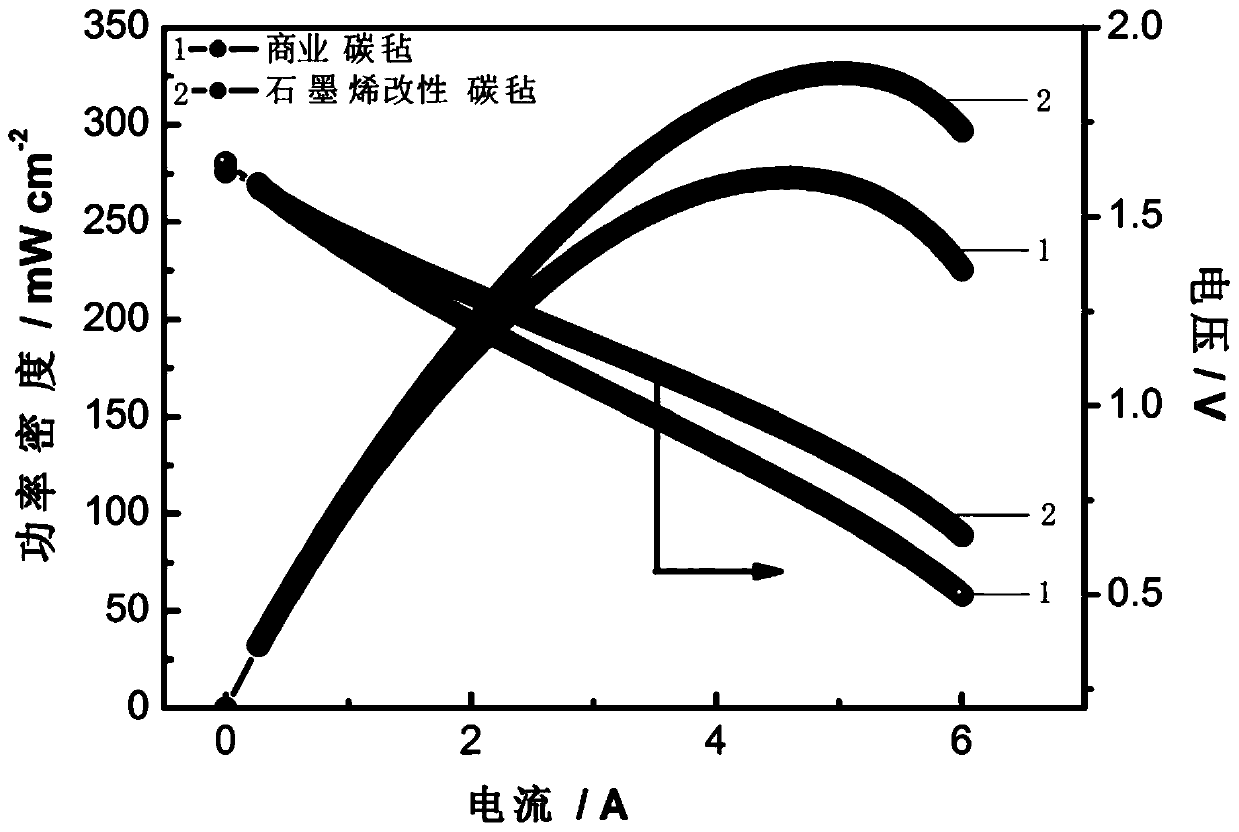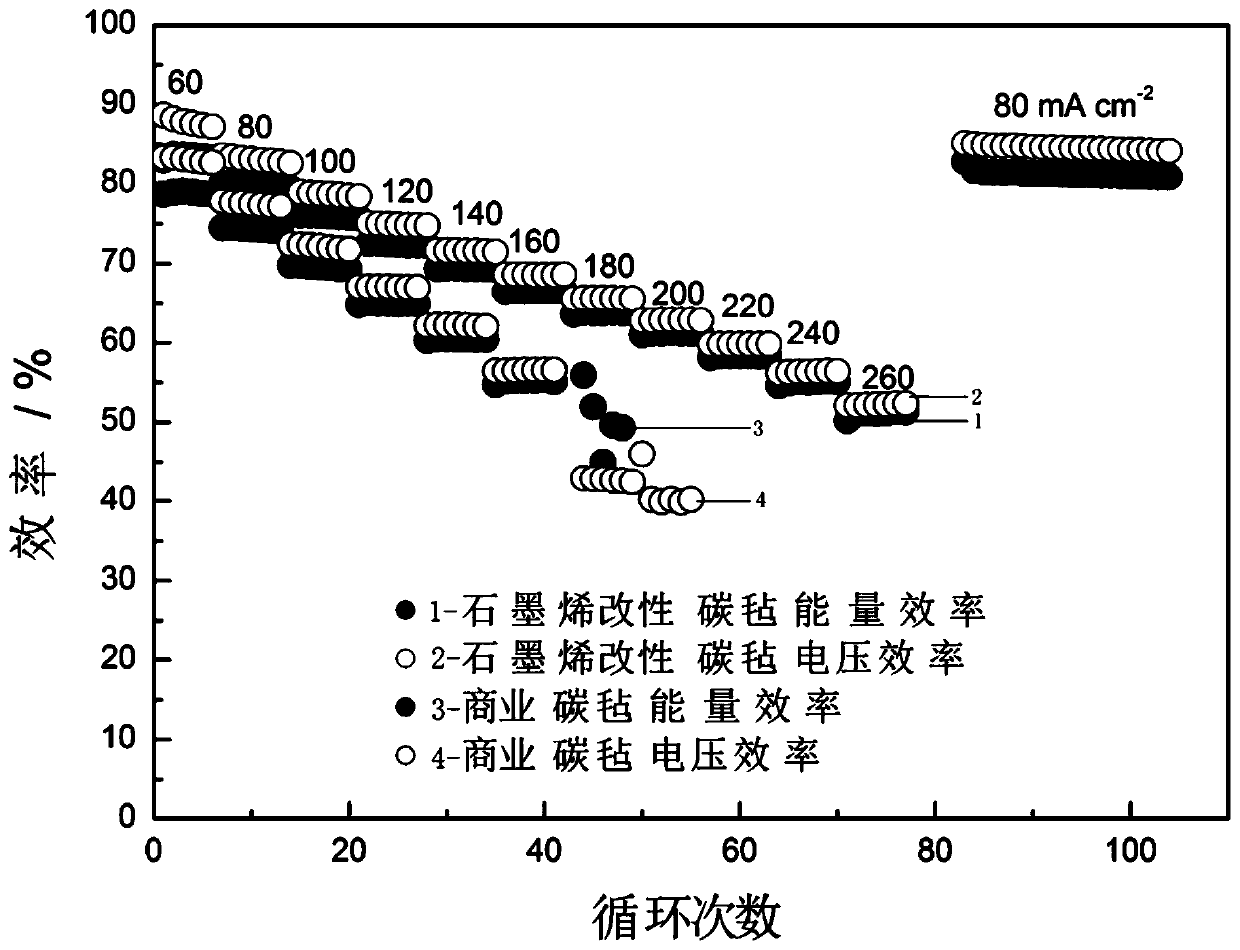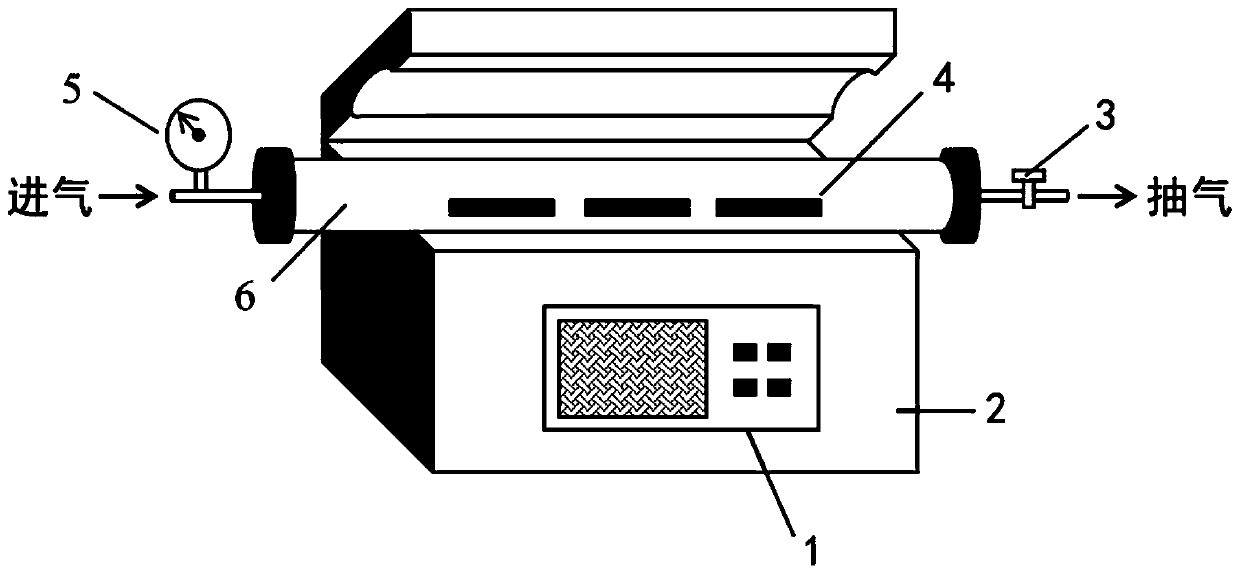A kind of preparation method of graphene modified carbon felt
A technology of graphene modification and carbon felt, which is applied in structural parts, regenerative fuel cells, electrical components, etc., can solve the problems of poor conductivity of carbon felt, high cost of VRB, low chemical activity, etc., to achieve improved conductivity, high Effects of power density and large specific surface area
- Summary
- Abstract
- Description
- Claims
- Application Information
AI Technical Summary
Problems solved by technology
Method used
Image
Examples
Embodiment 1
[0049] 1. The method for carbon felt processing, comprises the following steps:
[0050] (1) Dry the carbon felt with an area of 5cm×6cm at 400-500°C for 20-30min.
[0051] (2) Soak the dry carbon felt in 2mol / L sulfuric acid solution for 20h, and then vibrate ultrasonically for 0.5h.
[0052] (3) The soaked carbon felt was repeatedly washed 12 times with deionized water.
[0053] (4) Dry the cleaned carbon felt at 100° C. for 12 hours.
[0054] 2. The preparation method of graphene modified carbon felt, the steps are as follows:
[0055] (1) Put the treated carbon felt into the tubular cavity, and push the cavity to the central heating area of the quartz tube.
[0056](2) Seal the quartz tube, close the air valve, and then turn on the vacuum pump to evacuate to 50Pa.
[0057] (3) Open CH 4 valve, adjust the gas flow to 6 sccm.
[0058] (4) After the gas flow is stable, close the CH 4 Valve, vacuum to 2-3Pa.
[0059] (5) Turn on H 2 valve, adjust the gas flow to 1...
Embodiment 2
[0074] The difference from Example 1 is:
[0075] 1. In step 2 (12), the time for preparing graphene-modified carbon felt by chemical vapor deposition is 5 minutes.
[0076] 2. Adopt all the other same steps of embodiment 1 to prepare graphene-modified carbon felt.
[0077] The internal resistance of carbon felt in the all-vanadium redox flow battery measured at room temperature is 0.6Ω·cm 2 , the surface resistance of the composite electrode prepared at this ratio is lower than that of commercial carbon felt (0.72Ω·cm 2 ), the battery performance in the VRB is further improved than that of the commercial carbon felt compared to Example 1. Graphene is evenly distributed on the carbon fiber surface of carbon felt, but the amount of graphene deposition is still relatively small, and the long-term cycle stability needs to be further improved.
Embodiment 3
[0079] The difference from Example 1 is:
[0080] 1. In step 2 (12), the time for preparing graphene-modified carbon felt by chemical vapor deposition is 10 minutes.
[0081] 2. Adopt all the other same steps of embodiment 1 to prepare graphene-modified carbon felt.
[0082] Due to the increase of the graphene deposition time, under the same conditions, the graphene load on the modified electrode increases, so the conductivity of the composite electrode is improved, which is higher than that of Examples 2 and 3. Therefore, the internal resistance of the modified electrode in the all-vanadium redox flow battery is measured at room temperature to be 0.5Ω·cm 2 , the surface resistance of the composite electrode prepared at this ratio is lower than that of the original carbon felt (0.72Ω·cm 2 ), the battery voltage efficiency in VRB is higher than that of original carbon felt, such as figure 1 shown. At the same time, the power density of the battery is significantly improved,...
PUM
 Login to View More
Login to View More Abstract
Description
Claims
Application Information
 Login to View More
Login to View More - R&D
- Intellectual Property
- Life Sciences
- Materials
- Tech Scout
- Unparalleled Data Quality
- Higher Quality Content
- 60% Fewer Hallucinations
Browse by: Latest US Patents, China's latest patents, Technical Efficacy Thesaurus, Application Domain, Technology Topic, Popular Technical Reports.
© 2025 PatSnap. All rights reserved.Legal|Privacy policy|Modern Slavery Act Transparency Statement|Sitemap|About US| Contact US: help@patsnap.com



